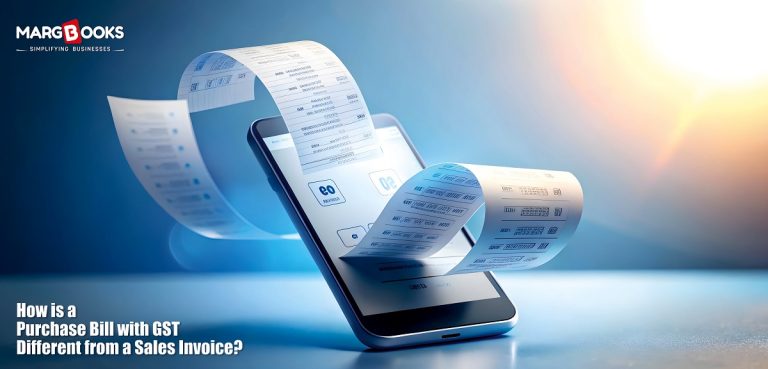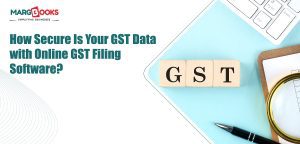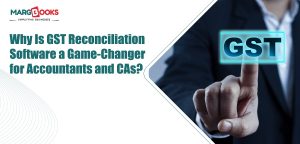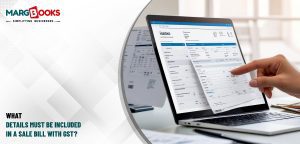Running a business in today’s GST-enabled economy requires more than just selling and buying. It’s about being organised, compliant, and aware of what each document in your billing system stands for. One common confusion many businesses face is the difference between a purchase bill with GST and a sales invoice. Though both involve transactions and GST, their roles are completely different in your books of accounts.
In this blog, we’ll break down how these two documents differ, why it’s important to understand them, and how using a platform such as MargBooks, a trusted online billing software and inventory management software, can simplify it all.
What Is a Purchase Bill with GST?
A purchase bill with GST is a document that you, as a buyer, receive when you purchase goods or services from a vendor. It records what you’ve bought, the amount you owe, and the GST included in the transaction.
Think of it as your proof of purchase. It’s essential not just for maintaining your financial records, but also for claiming Input Tax Credit (ITC). This is the GST amount you can reclaim when filing your returns, provided your supplier has also filed their GST returns correctly.
A standard purchase bill includes:
- Supplier’s details and GSTIN
- Your business name and GSTIN
- Date and invoice number
- Description and quantity of goods or services
- Taxable value and GST breakdown (CGST, SGST, IGST)
- Total payable amount
In short, a purchase bill with GST is a document that reflects what you have bought and the taxes you’ve paid on those purchases.
What Is a Sales Invoice?
A sales invoice, on the other hand, is issued by you (the seller) to your customer when you sell goods or services. It is your way of requesting payment for the items or services provided. It also serves as proof of sale and forms the basis for calculating your GST liability.
A sales invoice is a key financial and legal document that confirms a transaction has taken place. You can also do this with our Inventory management software. It’s also the document you use to collect payment from customers and declare your revenue in tax filings.
A typical sales invoice includes:
- Your business details and GSTIN
- Customer details
- Date and invoice number
- List of products or services sold
- Price per unit and quantity
- GST rates and amounts
- Total amount payable
- Terms of payment (due date, method, etc.)
The sales invoice is critical when it comes to filing GSTR-1 and maintaining a clear sales ledger.
Key Differences Between a Purchase Bill with GST and a Sales Invoice
Even though both documents might appear similar, they serve completely different functions in business operations:
1. Who Issues It:
- A purchase bill with GST is issued by your supplier to you when you buy something.
- A sales invoice is issued by you to your customer when you make a sale.
2. Purpose:
- The purchase bill acts as evidence of a business expense and helps you claim Input Tax Credit.
- The sales invoice reflects your income and forms part of your GST liability.
3. Accounting Treatment:
- A purchase bill is entered in the purchase account of your ledger.
- A sales invoice is recorded in the sales account, increasing your revenue.
4. Tax Impact:
- GST on a purchase bill is recoverable through ITC.
- GST on a sales invoice is payable to the government.
Understanding these distinctions is not just about accounting accuracy. It directly affects your GST filings and financial reporting.
Why Is This Difference So Important?
Misinterpreting a purchase bill as a sales invoice or vice versa can create serious problems:
- You may file incorrect GST returns
- You risk losing Input Tax Credit
- It can lead to mismatches in your books during audits
- Inventory records may become unreliable
That’s why many businesses today rely on digital solutions to avoid these issues entirely.
How Online Billing Software Like MargBooks Helps?
MargBooks, a leading online billing software, takes the stress out of managing your bills and invoices. It ensures that every document is stored, tracked, and categorised properly, whether it’s a purchase bill with GST or a sales invoice.
Key Benefits of Using MargBooks:
- Generate accurate, GST-compliant invoices in seconds
- Automatically categorise documents as purchases or sales
- Track and claim Input Tax Credit without errors
- Maintain clear ledgers for both sales and purchases
- Set alerts for due dates, payments, and tax filing
Moreover, MargBooks isn’t just about billing. It also comes with an integrated inventory management software system that updates stock levels in real-time whenever you buy or sell items. No more guesswork, no more manual stock calculations.
Inventory Accuracy Made Easy
One of the most overlooked impacts of incorrect billing is poor inventory tracking. If you mistakenly treat a purchase bill as a sales invoice, your stock levels will be off. This can lead to over-purchasing, stockouts, or worse, loss of business.
With MargBooks:
- Purchase entries increase your stock automatically
- Sales invoices decrease stock instantly
- You get real-time inventory reports
- Profitability calculations become more accurate
So whether you’re a wholesaler, a retailer, or even a service provider, the software keeps your stock, sales, and purchases in perfect sync.
Final Thoughts
Understanding the difference between a purchase bill with GST and a sales invoice is crucial for any business. While both deal with money and GST, their roles in accounting and compliance are entirely different. Mixing them up can cost you time, money, and peace of mind.
By using reliable tools like MargBooks, you can eliminate confusion, ensure compliance, and run your business efficiently. With features including, online billing software and inventory management software under one roof, it becomes easier to stay focused on what matters, growing your business.




